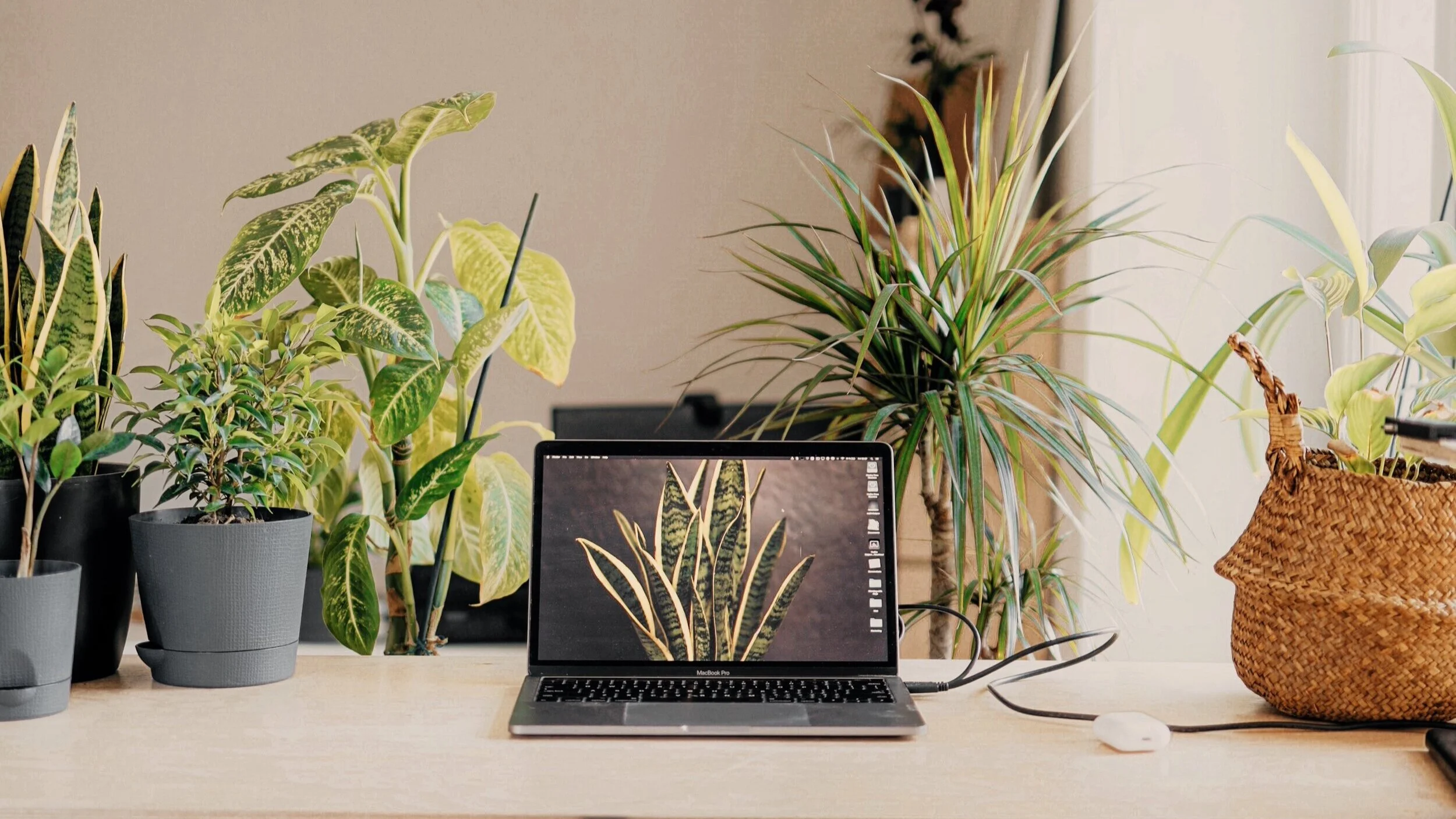How to be Carbon-Neutral While Working from Home
Photo by Vadim Kaipov
Working from home has become a staple of our everyday lives since the beginning of COVID-19. With offices moved online, workers around the world have developed new daily routines and habits for the “new normal”.
While working from home has in itself helped cut down elements of our environmental impact by eliminating CO2 produced from our daily commutes and office energy usage, there is plenty more that we can do to lower our footprint at home.
In this blog, I will provide 8 eco-friendly and cost-saving solutions that you can incorporate into your daily routine while working from home to become carbon-neutral!
1. Calculate your current CO2/environmental footprint
An important first step in becoming carbon-neutral is knowing what your current environmental footprint is. Once you know your footprint, you can then take steps to lower it.
Tools such as the WWF footprint calculator can help you calculate an estimate of your yearly carbon footprint based on a short questionnaire. Additionally, you can calculate specific footprints for your plastic usage among other impacts to reach personal goals like becoming plastic neutral.
As a bonus, calculating your footprint can also give you a better understanding of the sustainable actions you are already taking part in!
2. Reduce your cellular data usage
Did you know that your cellular data usage has a carbon-footprint? While the CO2 generated from using data is momentarily minimal (up to 1% of global emissions according to ADEME data), emissions from our general usage is growing every year. Luckily, solutions like connecting to wifi instead of using 4G for streaming services, can lower this impact.
If you’re curious to know your estimated footprint for your data usage alone, check out this online tool.
3. Recycled Paper Notebook
If you enjoy scribbling notes on an actual notepad as opposed to an electronic tablet, choosing a recycled paper notebook is a great eco-friendly solution.
The environmental impact of the paper-making lifecycle is huge. An estimated 42% of all industrial harvested trees are used for paper production. Negative environmental impacts attributed to virgin paper production include deforestation and the production of polluting wastewater and CO2.
The impact from the production of recycled paper is around 28-70% less energy intensive than virgin paper while also being less water intensive. This makes it a solid alternative to your typical notebook!
Mention GoingGreen10 at checkout for 10% off with your purchase of our favorite recycled paper notebook!
4. Water & Energy-Saving Devices
Working from home, your overall energy and water usage is probably higher than usual, especially if your entire household is at home. To lower your carbon footprint and save you money at the same time, you can install water and energy-saving devices like HYDRAO.
As a LED shower-head attachment, the Bluetooth enabled device changes color depending on your water usage, allowing you to know and keep track of how much water you’ve used. With this device, saving a little water here and there can save you hundreds annually while making your shower habits more eco-friendly. Use code: HYSEA10 for a 10% rebate.
5. Bring a reusable coffee cup to your coffee run
Whether you're brewing your own coffee at home or going to your favorite local coffee shop on a work break, having a reusable coffee cup is a sustainable and stylish choice. There are many styles to choose from, from insulated to glass to silicone. With so many options, there’s a style and color for everyone.
Don’t be surprised if your local barista finds this concept new, it just shows that you are starting a trend! Luckily many baristas will happily fill up your reusable cup, but it is best to ask if it is possible before you order. Even better is that many coffee chains are beginning to sell reusable coffee cups in stores with discounts for each time you use it!
6. Embrace low-carbon activities during your breaks
If you’re looking to add low-carbon activities into your work breaks, try a mid-day walk or cycle around the block or start a personal yoga practice. Doing something active during your break not only has benefits for your physical and mental health during lockdown, but also is carbon-neutral.
If physical exercise isn’t really your thing, try to find a creative outlet. Other low-carbon intensive activities include: planting, drawing and writing among others!
7. Reusable Bamboo Cutlery for takeout lunches
Plastic utensils from takeout are a large source of our individual plastic footprints even for the sustainably minded. To avoid plastic utensils the next time that you pick up a takeout lunch or snack, bring reusable bamboo cutlery along with you instead. Bamboo cutlery is not only more sustainable, but also trendy!
Make sure to mention that you do not need disposable utensils when you order in person or online.
Use code GoingGreen10 at checkout for a discount of 10% off your bamboo cutlery set!
8. Offsetting
Once you’ve calculated your estimated personal footprint and lowered it by incorporating some of our solutions, you can support one of the following projects brought to you by our partners to offset the rest!
Read more about our partnerships with the following offsetting projects:
From planting seagrass meadows to regreening forests to planting trees, there are plenty of offsetting projects for every cause that you’d like to support.
While becoming carbon-neutral by making daily changes alone is nearly impossible, it is important to lower your footprint as much as possible before offsetting. Remember to keep track of how much of your footprint that you’ve offset to become carbon-neutral and use this to create even more eco-friendly milestones for next year!
Are you a business owner looking to build your brand by becoming CO2 neutral? Get in touch.

